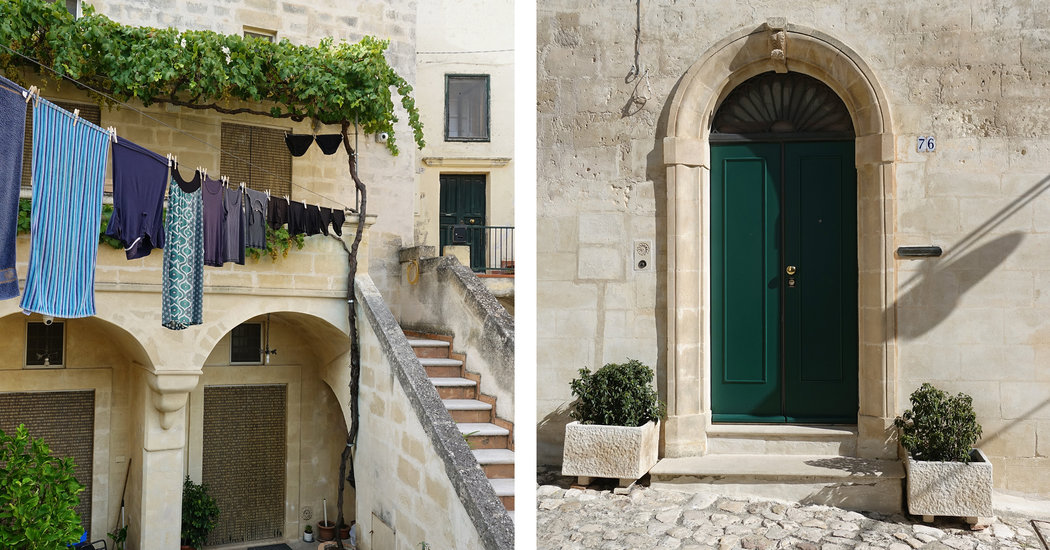
Simona’s B&B, Hoplites, was exactly where you want to be, in one of two Sassi, or rock districts, of Matera’s Unesco World Heritage-protected old towns. Both Sasso Barisano and the even older Sasso Caveoso began as cave dwellings; the city has been occupied since 7,000 B.C. To get to Hoplites, in Sasso Barisano, I dragged my bags up and down cobblestone hills.
Simona, a woman in her early 30s who speaks little English, greeted my arrival with cheek kisses. I got a two-story apartment to myself, with a private roof overlooking all of Sasso Barisano for 70 euros a night. The other rooms are in refurbished caves, as are most lodging options in the Sassi. The shower in at least one of Simona’s rooms is built into a former Roman grain silo from many years before Christ. Simona, her husband, her father and her mother, all of whom I met over breakfast (her mother makes homemade cake for the guests) spent three years turning fetid, pitch-black caves into cozy, white-painted havens.
Later in my stay, I moved to a fancy boutique hotel, La Casa di Lucio, for the chance to stay in a cave, which was painted all white and had a leopard print couch, and was just as fabulous as it sounds.
Anyone in Matera can tell you the story of how far the city has had to come to be a place that has things like bed-and-breakfasts and hotels; I strongly encourage making Casa Noha, an interactive museum, your first stop, to hear about the city in dramatic narration with visuals. Matera was once the capital of Basilicata, but a move of the capital to Potenza, and the funds that came with that, began a long descent into poverty. Up until the 1950s, families with six or more children still lived in caves in the Sassi, along with their livestock, and without electricity, running water or sewers. Politics, but also the urgency of a 50 percent infant mortality rate, led to the relocation of the Sassi’s 15,000 citizens to nearby modern communities.
The Sassi were empty for 30 years, well into the 1980s, but its citizens never abandoned them. A group of young, untrained citizen archaeologists documented its cave churches with their priceless Byzantine frescoes — and then those culture preservers became politicians and began cleaning up the Sassi. Unesco designation came in the 1990s, as did government programs to practically give away caves to anyone who’d renovate them. Next year Matera is going to be a European Capital of Culture, with a year of celebratory events and an influx of funds for renewal projects.
I had arrived in Matera with grand ambitions to explore the Basilicata countryside, but soon found myself too engrossed to want to go anywhere else. That, and getting myself up and down Matera’s pedestrian-only streets proved so tiring I couldn’t even fathom how I’d get to a car rental.
Every walk that Google Maps told me was going to take five minutes took at least 30, since that app does not account for hills. Or for an entire city being white. Wrong turns led to other wrong turns. But I was too busy taking pictures and gawking at every vista to be bothered.






